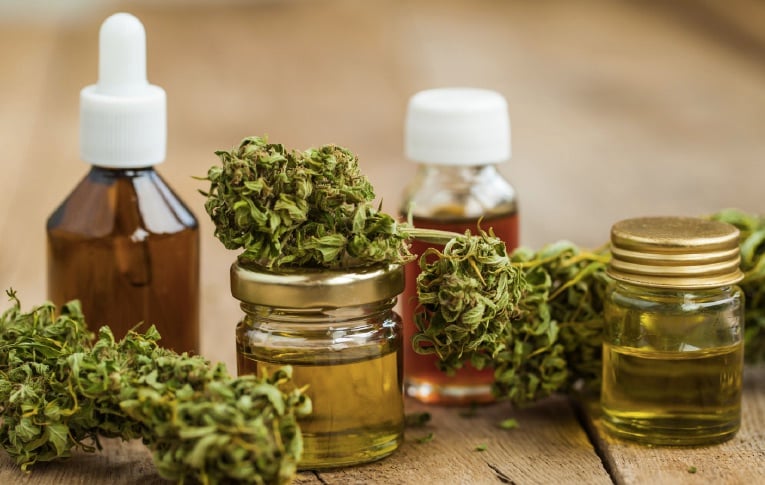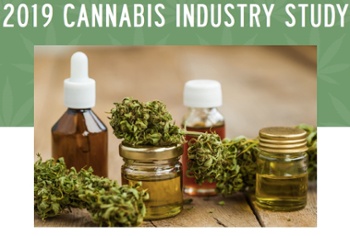The cannabis industry, though becoming more accepted and mainstream every day, remains shrouded in uncertainty and even taboo. This obscures the many ways the industry will, and indeed already is, shaping retail, manufacturing, grocery, c-store, and food service.
But at TrendSource, we don’t shy away from the big topics of the day, so, though it is a bit early in the game, we offer you our 2019 Cannabis Industry Report.
In a series of surveys, we asked respondents about their perceptions of and experiences in the cannabis industry, paying particular attention to the ways the burgeoning industry intersects with traditional businesses. Let’s get into it.
On Current and Future Users
The time for such a study is ripe, even if adoption rates are still low. Consider that among our respondents who do not currently use cannabis, roughly 56% indicated they would be open to consuming such products in the future. Yes, that’s right: more than half indicated that their current non-user status is perhaps temporary, and they can envision a time when they at least give it a try.
It gets even more interesting when you consider which generations are likeliest to do so. Baby Boomers who do not currently consume cannabis products were more open to trying it in the future than Generation X and Silents. The silent generation part makes sense, sure, but what’s up with Gen X? It is worth wondering how many of the baby boomer respondents are former flower children raised in the era of counterculture, and who prove just a bit more open to cannabis than Gen X, which came of age in the Reagan “just say no” era.
A Concentrated and Pure Point
But regardless of future intention, the question remains, what keeps non-users from cannabis consumption? The answer will be music to cannabis retailers’ ears: the top-two reasons current non-users abstain from cannabis are its legal situation and concerns about product purity, both of which far outweighed concerns about negative social perceptions, drug-testing, and even cost.
Indeed, it is worth restating: according to our report, the two biggest reasons individuals choose not to consume cannabis are the products’ current legal status and their unreliability when it comes to dosing and purity.
Obviously, these are both pain points that time will ultimately erode as cannabis gains increased legal sanction and the attendant regulation that accompanies legalized vice products. This means that, soon, consumers will be able both understand and trust a product’s concentration and purity much in the same way that alcohol became pure and reliably dosed under post-prohibition federal regulation.
This means that, without doing too much legwork, retailers and manufacturers will find an expanded user base whose main concerns are stripped away by the product’s changing legal status over time.
Millennials Like Brick-and-Mortar When Bud is Involved
When we asked respondents if they’d prefer to purchase cannabis online or in-store, the answers surprised us, particularly when considering millennial 1s. Indeed, despite growing up online, and being the generation most associated with the deterioration of brick-and-mortar retail, millennial 1s would much prefer to purchase cannabis products in-store than online—40% v 14%.
To what can we attribute this glaring discrepancy? As we argue in the full report, some of this likely has to do with the unique experience in-person cannabis shopping offers. In today’s legal dispensaries, consumers are invited to investigate the products, to discuss them with expert ‘bud tenders,’ and to even form friendships and community. These are the types of experiences that other brick-and-mortar retailers already offer, sure, but there is something profoundly more exciting about shopping for a product that, until recently, was legally and socially forbidden.
Though we expect online cannabis purchases to only increase, for the time being, the novelty and experience of shopping in-person is inviting to our youngest respondents.
Do You Smell What Cannabis is Cooking?
When asked what kinds of cannabis products they would consider purchasing, some further surprises emerged. For example, cooking ingredients are the most popular product among nearly every generation (think: box cakes like Duncan Hines and Betty Crocker, premade cookie dough, and even old favorites like Bisquick).
Such items offer customers a best-of-both worlds scenario. The products are premeasured and dosed, meaning consumers know exactly how much THC they are getting per serving, but also offer consumers the chance to do it themselves, to bake a cake or some biscuits with that homemade touch and the social capital that comes with it (“you made this cake all by yourself?!”).
And again, offering people experiences with their products seems to make a compelling case for relevance.
What Else is in the Report?
The full report explores several other avenues of inquiry, offering generational, income, and gender segmentations for each.
Which types of existing retailers and manufacturers would consumers be comfortable with selling cannabis products? What specific cannabis-infused product types would consumers most like to see? Which forms of advertising would most appeal to consumers, which will just turn them off, and what’s the single biggest cannabis advertising no-no (hint: it has to do with the children!).
Find out the answers to these and many, many other questions by downloading the full report.


